Design Curriculum Framework & Projects
UE-HCI Lab has been the venue for over 150 Bachelor’s Thesis Projects executed by B.Des students under supervision since 2003-04.
Apart from Thesis projects more than a hundred Mini Projects in Usability and Interaction Design have been successfully executed as part of Courses offered under this Laboratory. It is these projects that students have attributed to for getting well placed in jobs at the end of their degree programs. The structure of the B.Des program between 2004 and 2016 with UE- Interaction design emphasis is shown in the following figure.
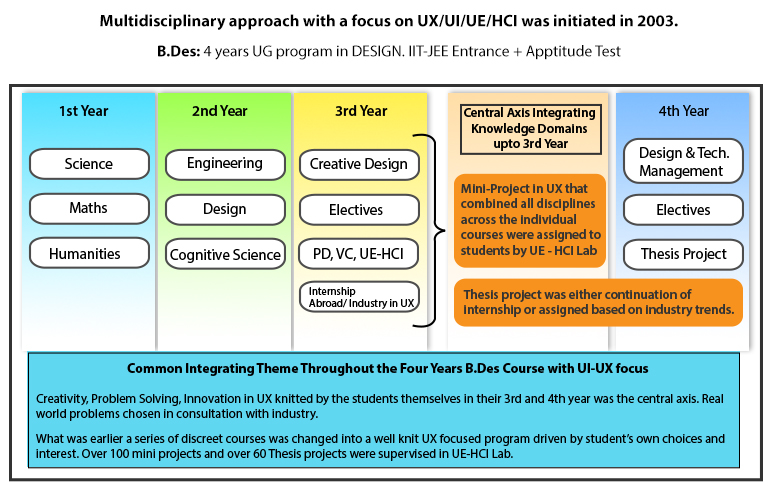
Design Projects
Illustrative List of Typical Projects executed in the UE-HCI Lab:
• Extending Mobile as a Networking Medium for Educational Campuses
• Study of hand gestures as a mode of interaction and its future application Scenarios
• A tangible product to enhance real time user experience of enjoying music using kinesthetic interactions.
• Speech Based Mobile Interface for the Textually Low Literate
• User Centered Design of a Collaborative Work Environment in an Educational Scenario using Multiple Mice Inputs
• An Artificially Intelligent Recommender for enhancing user's browsing experience.
• Role of Non-verbal communications in User Interactions and Demonstration through Gesture driven interfaces.
• Interactive Information Platform for Remote Health Care
• Study of Mobile as a future strategic advertising medium in India
• ICT in computer supported collaborative learning: some experiments at the school level
• Interactive Digital Signage system design for IITG campus
• An online aptitude testing system for admitting students in design program
• A multimedia repository for design projects – A Knowledge Management approach
• A Graphical User Interface based Remote Public Bus Transport Management System for Guwahati city.
• An Indian Culture Sensitive Tangible Social networking System.
Examples with details
STAMBHA
An interactive Mandala formation system inspired by the act of touching pillars in a temple. The system installed in a public place including a festival and place of worship was intended to encourage interaction between people not known to each other through an act of creating Mandala (projected from the ceiling) by repeatedly touching pillars to geometrically configure Mandala like images in the center of the floor. Picture depicts full prototype testing under progress.
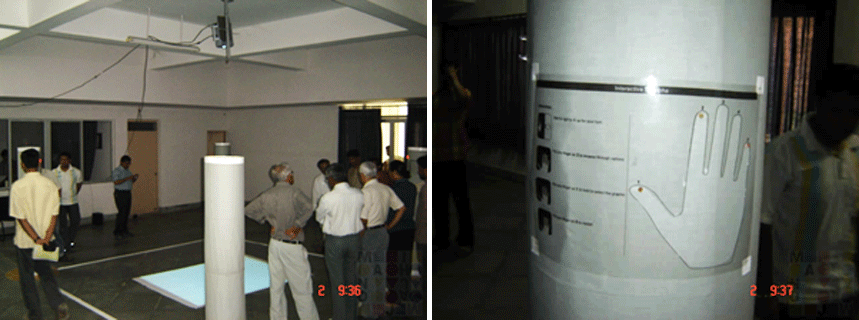
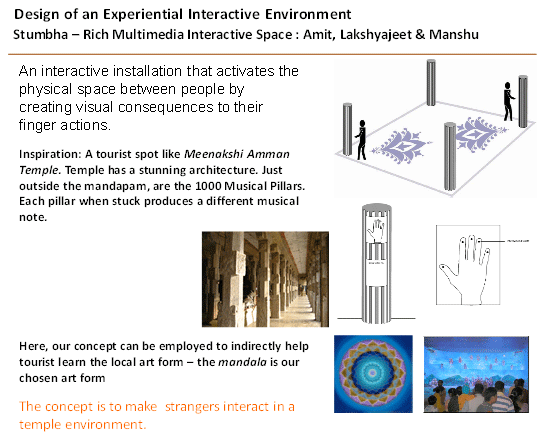
AUGMENTED REALITY FOR BUILDING HEALTH DIAGNOSIS
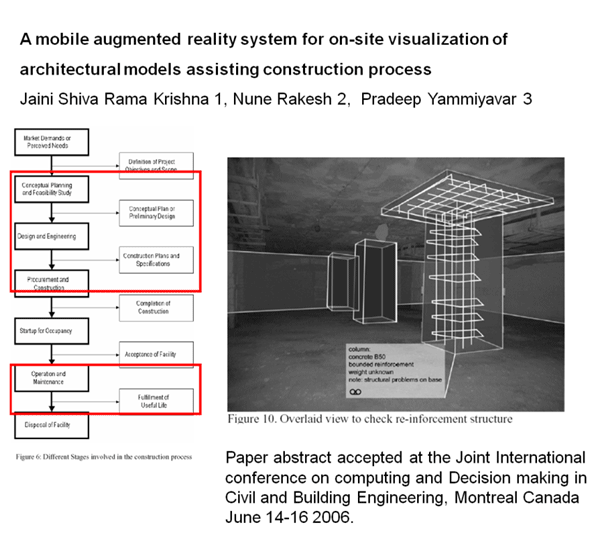
INTERACTION PRODUCT DESIGN PROJECTS 2003 to 2006
Navigation Device For Library
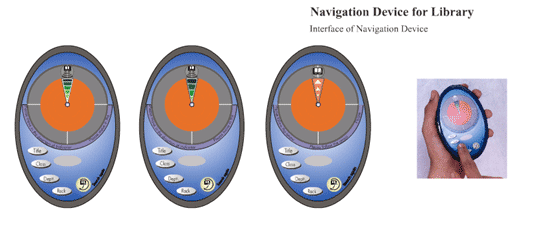
Room AROMA REMOTE for AC
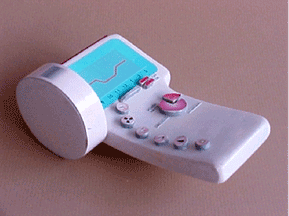
Bank Locker Interface
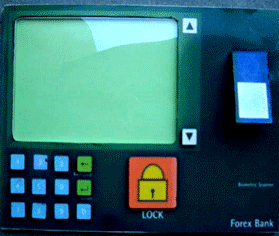
GUI for Operator to ease Earth digging calculations

Tangible User Interface (TUI) to teach and improvise dance
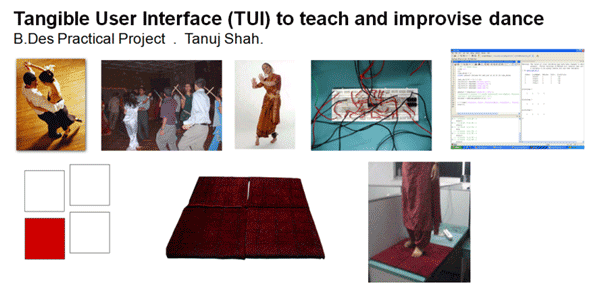
Design of Geriatric Information System - A mobile memory aid for the elderly

Interactive Wall based on proximity and touch sensing
Public spaces are interactive by the very fact that they are designed to be looked at, walked around, and used by multitudes of people on a daily basis. Architects design such spaces to create physical scenarios for people to interact with, but this interaction will usually be one sided- the physical space does not usually change or react. By adding interactivity to objects in public spaces we can make such spaces more dynamic and interesting to use. The idea is to arouse the curiosity of the user and to engage him in various fun related interactions with the objects.
To achieve this, we can make full use of technologies available at present and in the near future. Through this project we aim to use some of these technologies to create interesting interaction design concepts by which we can enhance the overall experience of public spaces.
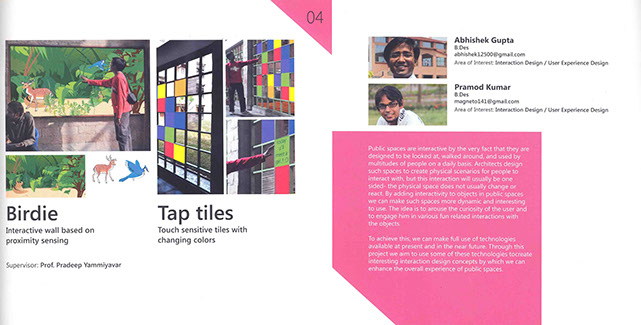
Hands On: Enhanced Transaction System for Non-prepackaged Goods
Food and grocery sector constitutes 60% of Indian retail pie with majority of goods non-prepackaged. After analyzing current transaction cycle for non-prepackaged goods, several opportunities for retailers are identified to develop unique customer service appeals based on the concept of cycle time reduction.
Indian retail requires a different approach as customers behave in a different way. Considering cultural aspects HandsOn, a transaction system model is proposed which empower customers by giving them a hand-held device that would perform tasks of scanning items through a tag reader (RFID/NFC/QR), weighing goods, making payments, providing assistance in form of product comparisons, store maps, offers, etc.; thus giving them more control over the interaction. Retailers can track inventory at any point of time discouraging pilferage. Transaction time is reduced as queues are avoided (list already prepared) thereby increasing customer footfalls.
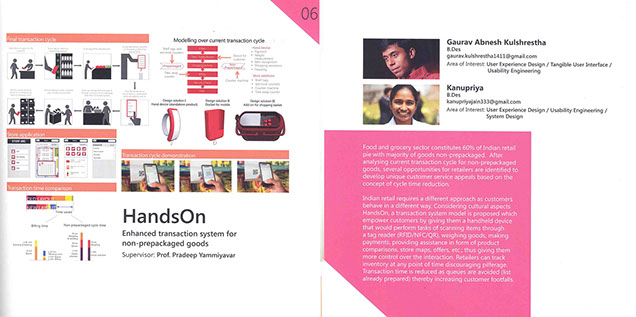
Online Tool for Collaborative Card Sorting
Card sorting is a simple technique in user experience design where a group of subject experts or "users", however inexperienced with design, are guided to generate a category tree or folksonomy. It is a useful approach for designing information architecture, work-flows, menu structure, or website navigation paths. In card sorting, the concepts are first identified and written onto simple index cards or Post-it notes. The user group then arranges these to represent the groups or structures they are familiar with.
Our project looks forward to exploring potential in assisting a designer to perform a collaborative card sorting activity with his user group. This would be done without being physically present with the users and later on analysing the results, which will help designer in designing the information architecture or work flow.

Mobile Health Management for Diabetics
Dsense is a mobile-based health management system that helps diabetic to take control of their disease by generating patient specific solutions. It serves as a global platform to store and share medical records, get updates, feedback and information about current happenings/ events.
The system consists of the user (diabetic), Dsense care team who monitors health of all the patients and user's or patients personal doctor, if he wants to be a part of this system. This whole system works similar to a social network but with restricted people and selective sharing which enables diabetic to make necessary adjustments leading to healthy life.
Dsense collects and processes data coming from the patients’ and the physicians’ tools. It works as an information exchange bridge between health-care team and patients.

Information Management System for Food Catering System
This project attempts at designing an Information Management system for food catering system at IIT Guwahati to facilitate the food lovers at IIT Guwahati.
The idea was to facilitate the food lovers at IITG to choose - what they want to, when they want to and where they want to. Thus making their experience more enjoyable & less strenuous, right from placing their order to receiving their order. Main thinking behind this project was to utilize the technology present in the pockets of the students to create a meaningful experience out of it & to create a win-win situation both for food caterers and food lovers.
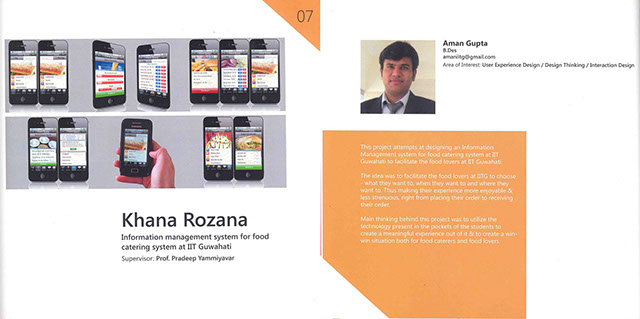
A Social Networking Platform for Children
The potential of social networking sites in children's life is enormous. These encourage collaborative learning, creative thinking, language development and participation in society, to mention a few. However, children start using SNS when they are not fully clear of how information in on-line environments may be utilized and their concepts of e -safety are abstract.
Amigo is a safe and secure interactive platform designed for school children from the age group 9-14 years that fulfills the need of communication and socialization. It connects children from all over the country so that they can share ideas, information, values and culture with each other. Inter-school networks are made and the registered students of a school can use the site. A mentor from the school is present and able to modulate certain activities of a child. The site provides a transparent network of interacting groups along with private communication space of the users
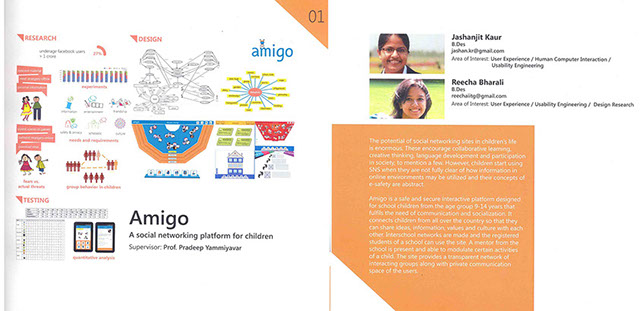
Mobile App for Community Health Workers in Assam.
In the present age, the government is putting significant emphasis on fostering the health of people, especially in the rural areas. In such a scenario, empowering the community health workers becomes an imminent task at hand to bolster the efficacy of the many health schemes promoted by the government.
In this project I have tried to understand the current system as functional in the North Guwahati area in my locality and have tried to propose design interventions for the broader system to plug the prevalent loopholes. The focus has been on empowering the ASHA members, ANMs and other multi-purpose health workers in their work through the intervention of Information and Communication Technology.
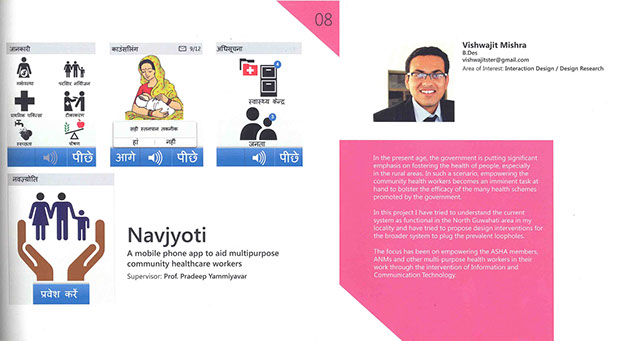
Mobile App for Consumer Awareness, Protection and Complaints
The process of development along with the expanding globalization and liberalization process has increased the number of consumer related issues. Indian consumers are largely unaware of their rights and passively accept their violation. Many constitutional provisions have been made by government to protect the consumers. But, still the consumer movement in India is in its infancy.
The project is about bridging the gap between consumer and consumer forum and sensitize consumers towards consumer rights. The idea was to build a mechanism which will benefit the user by helping them to lodge complaints in an easy and quicker way and at the same time, making them aware of the consumer rights, pros and cons while buying products.
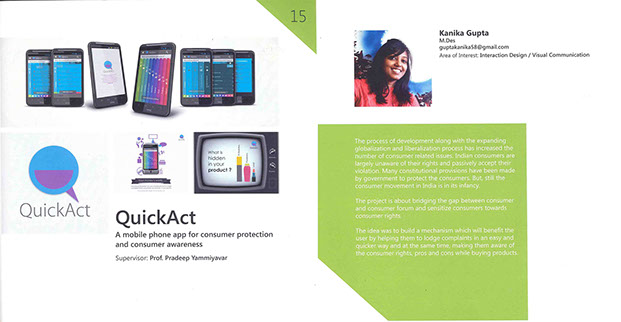
A Tangible Product to Enhance Real-time User Experience of Enjoying Music Using Kinesthetic Interactions

Virtual Home Environment: A retail solution in electronics context
There are numerous design opportunities existing in the present retail business of consumer electronics that can transform shopping behavior into a long lasting customer relationship. This project explores such opportunities in high-end electronics stores. We identified critical insights from field study including structured interviews with store managers and online survey.
These insights led us to development of the concept, "Virtual Home Environment", for better perception of purchased devices in an electronic store.
This concept is particularly dealing with the concern of customers being conscious about product aesthetics, especially women by enabling customers to check relevancy of a product in their home environment by leveraging them with a tool to place a product in their virtual home setting.
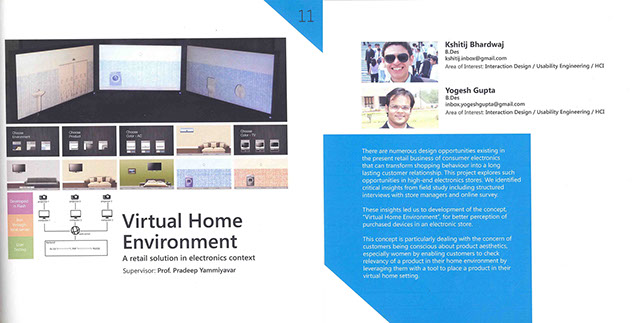
Chetak: Design enhancement in treadmill
Now a days, life of people has changed due to industrialization and competition. People cannot manage time and space due to work stress and expensive land costs respectively. As a result people may suffer with diseases like cardiovascular, Type 2 diabetes etc. and such diseases starts with one common symptom "OBESITY" which is a result of lack of exercise and unhealthy food habits. Such diseases can be avoided by daily exercise.
The objective was to create a compact interactive health care system for family in urban areas, which will guide them to access the information according to their age or gender. The process of the project deals with the study of ergonomics and cognitive aspects of users interacting with tread mill, in Indian families living in urban area.
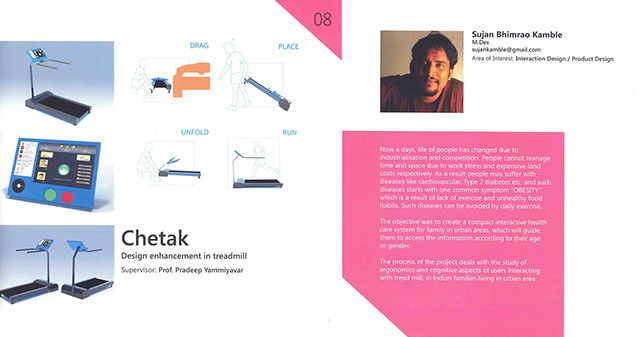
Ubiquitous Interaction: A design potential for usability in everyday activities
Humans have been communicating to their environment through their sensory organ which acts as an interface between the environment and the brain. The touch on the hand is not an experience of the hand but brain, similarly it is not the eye that sees the things but brain which is capable to perceive and interprets the scene. Our ability to communicate and influence our surrounding environment has exponentially increased with the modern technology. Brain computer interface is the field which has been struggling to create direct communication between the brain and external devices. Some have also regarded BCI as the future of HCI.
This project tries to explore some possibilities for the future where communication can happen through direct communication through brain and facial gestures.
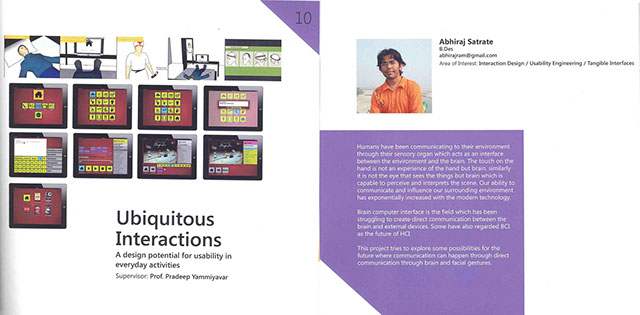
Culture Sensitive Tangible Social Networking
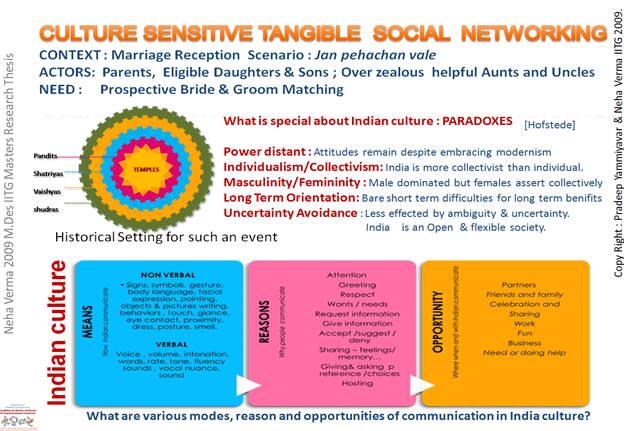
Interactive Toy for Autistic Children
Interactive toys are increasingly used as a learning aid in special schools. Autism is the neurological development disorder characterized by impaired social interaction and communication, and by restricted and repetitive behavior. This project focused on the process of development of toys as a teaching and learning aid for autistic children. Based on an observational study a prototype was conceptualized and initial tests were done. The processes involved have been documented as part of the student's thesis report, apart from the cost-effective working prototype built from scratch at the UE-HCI lab.
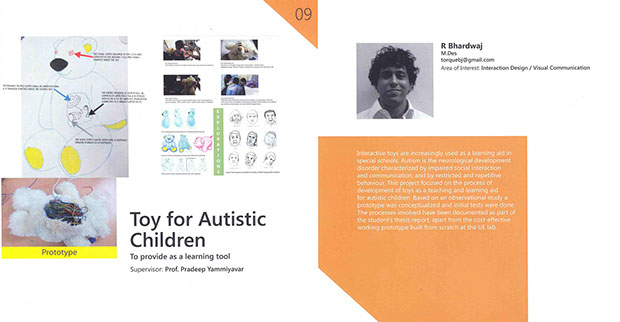
Visualization of Information On Small Screens
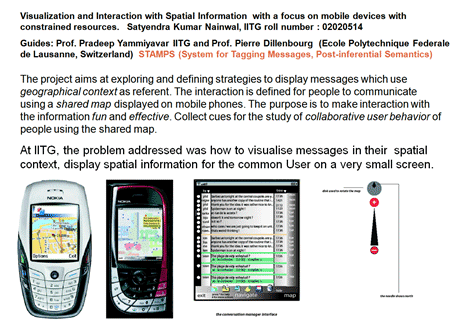
Learning Management System
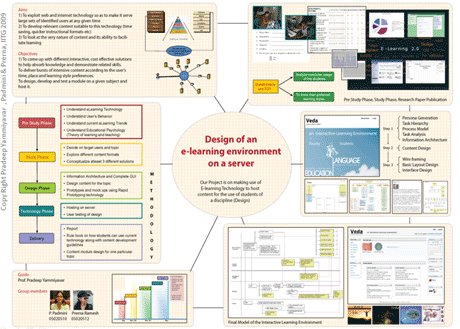
Knowledge Management System
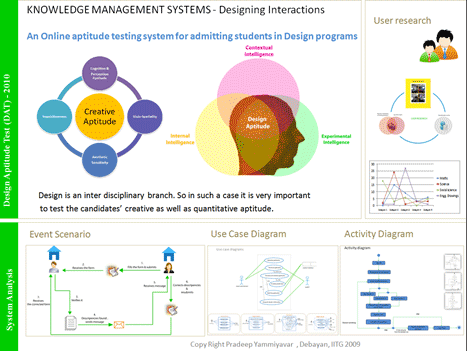
Online Aptitude Testing System for Design Programs
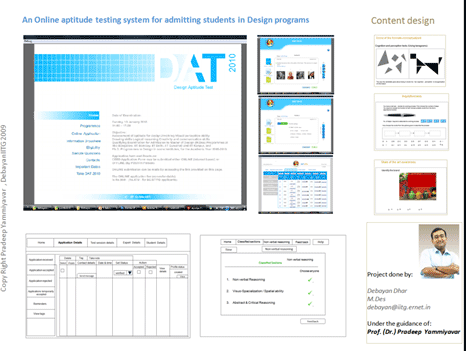
There are 100 such Archived Interaction Design Projects that were executed in the UE-HCI Lab between 2003 And 2016. Only a few have been depicted here.
